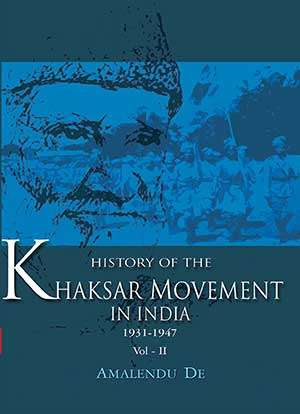Khaksar Movement in India – Vol II
Khaksar Movement in India – Vol II is backordered and will ship as soon as it is back in stock.
Couldn't load pickup availability
Genuine Products Guarantee
Genuine Products Guarantee
We guarantee 100% genuine products, and if proven otherwise, we will compensate you with 10 times the product's cost.
Delivery and Shipping
Delivery and Shipping
Products are generally ready for dispatch within 1 day and typically reach you in 3 to 5 days.
Book Details
-
Title: History of the Khaksar Movement in India (1931–1947), Volume II
-
Author: Amalendu De
-
Language: English
-
ISBN: 9788180034843
-
Cover Type: Paperback
About The Book
"History of the Khaksar Movement in India (1931–1947), Vol – II" continues the detailed and authoritative exploration by Amalendu De into one of the most intriguing political and social movements during the Indian freedom struggle. This volume picks up from where the first left off, providing deeper insights into the Khaksar Movement's growth, strategies, and evolving role leading up to India's Partition in 1947.
Founded by Inayatullah Khan Mashriqi, the Khaksar Movement sought to unite the Indian Muslim community through discipline, social reform, and political consciousness. In this second installment, the author delves into the movement's challenges, internal dynamics, ideological tensions, and interactions with other major nationalist and religious groups in British India.
Through critical analysis and extensive archival research, Amalendu De unpacks the movement’s influence in Punjab, its presence in Lahore, and its engagement with the broader socio-political transformations during the final years of British rule. The book offers a unique lens on the non-mainstream narratives of the freedom movement, uncovering the Khaksar ideology’s complex relationship with nonviolence, Islam, and militant organization.
This scholarly volume is essential for readers interested in South Asian studies, political ideologies, Islamic movements, and the partition of India. It also complements Volume I, making it a must-have for anyone looking to understand the full scope and legacy of the Khaksar Movement in the Indian historical context.





